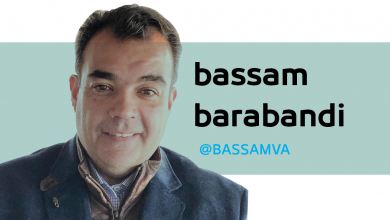The Death of al-Baghdadi (1-2)

A closer look at military operations in Iraq from July to December 2019 provide new northern Syria. Together with details from Iraqi intelligence, these operation showed how the Islamic State could be kept down and even be forced to make deadly mistakes, like moving its leader from its heartlands to a high-risk area. The sweeping operations put immense pressure on the organization and reached al-Baghdadi’s hideouts in Anbar, before he took the journey to Idlib where he was raided by US forces. At the same time, the organization he left behind was able to pull off a transition without apparent disruptions, appointing a new leader and mobilizing affiliates across the region to pledge allegiance to him. Taken together, the past year should serve as a reminder that continued pressure against the Islamic State is vital to prevent the Islamic State from resurgence, because as its predecessor group demonstrated a decade ago a still functioning and decentralized organization can still rise if that pressure is lifted.
Squeezed Out of the Desert
Toward the end of October 2019, the Islamic State was facing probably one of the most critical challenges to its survival. Abu Bakr al-Baghdadi, its leader since April 2010, detonated himself during a U.S. military raid on his hideout in Barisha, an obscure town in the northwestern Syrian province of Idlib and a stronghold of jihadi rivals of the Islamic State, on the night of Saturday, October 26. The following day, the group’s spokesman, Abu al-Hassan al-Muhajir, was killed in another operation.
The most extensive details on the circumstances that led to the location and targeting of al-Baghdadi were reported by the Saudi television channel Al Arabiya, citing the Iraqi National Intelligence Service.
Al-Baghdadi and al-Muhajir were in the months before they were killed the only public-facing figures in the organization, issuing official messages about key events to the group’s followers. So their deaths in quick succession complicated the task of presenting a new leadership to its support base. Moreover, the death of the self-styled caliph came only seven months after the collapse on March 23, 2019, of the physical caliphate he had established five years prior. The Islamic State lost its two best known leaders just as it was still trying—with mixed results—to cope with the demise of its physical caliphate.
The Islamic State’s ability to expand beyond Iraq—to Syria in 2011 and beyond in 2014—was possible in part because of its ideology that emphasized and delivered on the establishment of a caliphate, something that other jihadi and Islamist movements ultimately aspired to but did not seem to pursue when opportunities presented themselves. Conversely, the collapse of that caliphate and the death of its caliph has now made the Islamic State more vulnerable to internal and external challenges to its survival, and complicated its attempts to maintain its operational relevance and, more critically at this point, jihadi legitimacy.
The circumstances that led to al-Baghdadi’s killing suggest the organization was under significant and sustained pressure, which may have caused it to pick an unlikely location for hiding its leader. Much of the reporting about al-Baghdadi’s death, and analysis of why he picked Idlib as a hideout for the symbol of its continuation as an organization, overlooked a set of parallel events that were playing out in Iraq that led the Islamic State to make a fatal mistake.
The events in question demonstrate that the Islamic State was being defeated in the area where it was best positioned to stage a comeback, in the desert areas along the Syrian-Iraqi borders. A relentless campaign waged by the U.S.-led coalition and Iraqi forces drove al-Baghdadi and his top aides out of Anbar to the rebel-held northern Syria.
The Islamic State conceivably may have picked Barisha as a hiding place for its leader because it suspected those hunting down al-Baghdadi would be looking elsewhere. This is because the northern parts of Syria are controlled by various forces deeply hostile to the Islamic State, including fellow jihadis with deep animus toward al-Baghdadi and who had frequently carried out campaigns to find and kill individuals suspected to be Islamic State sympathizers. Another possible reason the Islamic State chose the area is because, unlike Iraq and northeastern Syria, the airspace above Barisha is controlled by Russia, the Syrian regime, and Turkey, not the United States or the international coalition led by it. However, details provided by Iraqi authorities point to another possibility, that the Islamic State simply may have had no choice but to take the high risk of hiding its leader in a hostile environment.
The most extensive details on the circumstances that led to the location and targeting of al-Baghdadi were reported by the Saudi television channel Al Arabiya, citing the Iraqi National Intelligence Service.
According to the Al Arabiya report, Iraqi authorities tracked al-Zoubai’s movements for a month after he entered the country, and killed several senior members of the group along the way including al-Baghdadi’s courier, his father-in-law who was in charge of his security details.
The channel featured multiple interviews with senior Islamic State figures, including with al-Baghdadi’s brother-in-law, Mohammed Ali Sajet al-Zoubai, who was captured by the Iraqis as he entered Baghdad reportedly to relay messages to the group’s cells in the capital soon after he crossed from Syria into Iraq in July 2019. Buttressing Al Arabiya’s reporting, a number of Western outlets reported the role of a close aide in the hunt for al-Baghdadi. The Guardian’s Martin Chulov, citing Iraqi officials, revealed that a Syrian smuggler, his wife, and one of al-Baghdadi’s relatives provided details about the route he took into Idlib. Chulov reported that the information was passed on to the CIA, which later pinpointed al-Baghdadi’s domicile in Idlib in mid-October. The Associated Press also reported on al-Zoubai’s role, citing Iraqi and Syrian Kurdish sources, or, as a U.S. official phrased it, a “guest” inside al-Baghdadi’s inner circle.
According to the Al Arabiya report, Iraqi authorities tracked al-Zoubai’s movements for a month after he entered the country, and killed several senior members of the group along the way including al-Baghdadi’s courier, his father-in-law who was in charge of his security details.
According to the Al Arabiya report, al-Zoubai also led Iraqi forces to al-Baghdadi’s last hideout in Iraq, an six-meter by eight-meter tunnel in Anbar, and where al-Baghdadi reportedly recorded his last video appearance, which was released in April 2019. According to the report, one of the three aides shown in the video was the Islamic State’s former spokesman, sitting to the left of al-Baghdadi (from the latter’s perspective). Both men left the area and relocated to northwestern Syria shortly after that video was filmed. According to Iraqi authorities’ account to Al Arabiya, al-Baghdadi’s safety was increasingly at risk as government and international forces intensified operations to clear the areas along the Syrian-Iraqi borders.
After losing its centers in Iraq and Syria, the Islamic State had an increasingly narrower menu of options for where to hide its leaders and stage a comeback. Iraq had become significantly less safe to operate in after the Iranian-backed Iraqi government forces along with Shi`a militias took control of the northern and western Sunni parts of the country and blocked the border crossings from Syria. By April 2019, the group’s last bastion, in the desert areas in Iraq westward near the Jordanian border, came under pressure, especially after the group lost its last town in Syria—Baghouz in the Euphrates River Valley region. By the spring of 2019, the only part of Syria not under the control of either the Assad regime or Kurdish forces supported by the United States was Idlib.
In sum, the Islamic State’s top commanders in Iraq had been hunted down one by one—first his brother, then his father-in-law, then an operative identified as Abu Sabah, his courier, and others, and before the capture of his brother-in-law. After the Islamic State lost its territory in March, the Iraqi forces were intensifying operations around its caliph’s hideouts in Anbar and adjacent areas along the Syrian-Iraqi borders, and the group was losing any assets it might have cultivated or built in the desert in times of strength.
Hassan Hassan is an analyst and writer who focuses on militant Islam, nonviolent extremism, and geopolitics in the Middle East. He is a director at the Center for Global Policy, a think-tank in Washington D.C. and the author of ISIS: Inside the Army of Terror, a New York Times bestseller.




